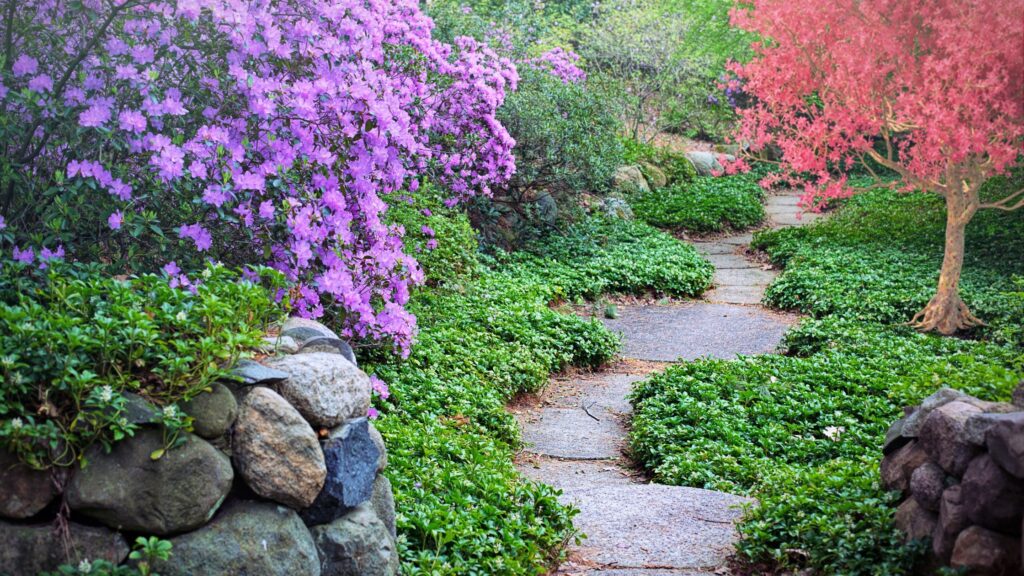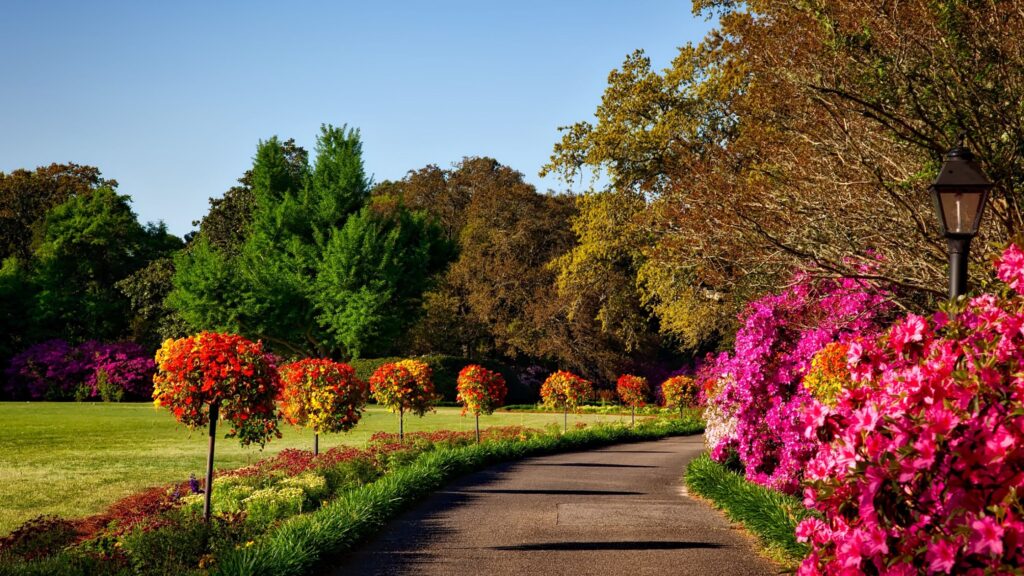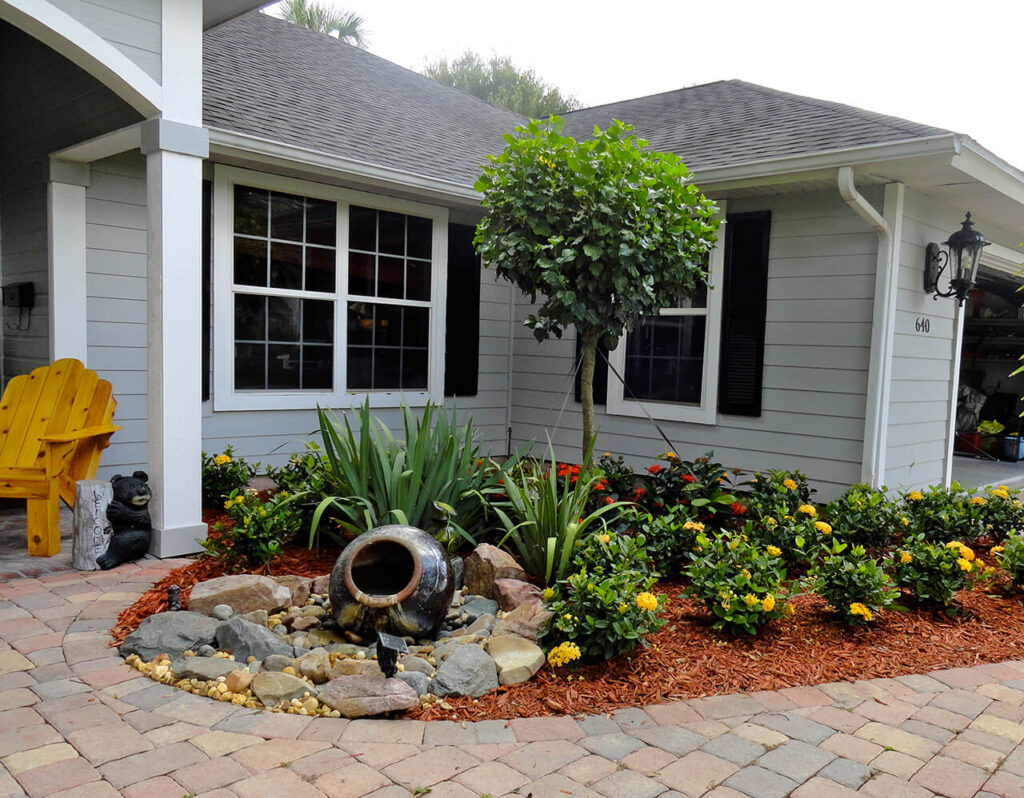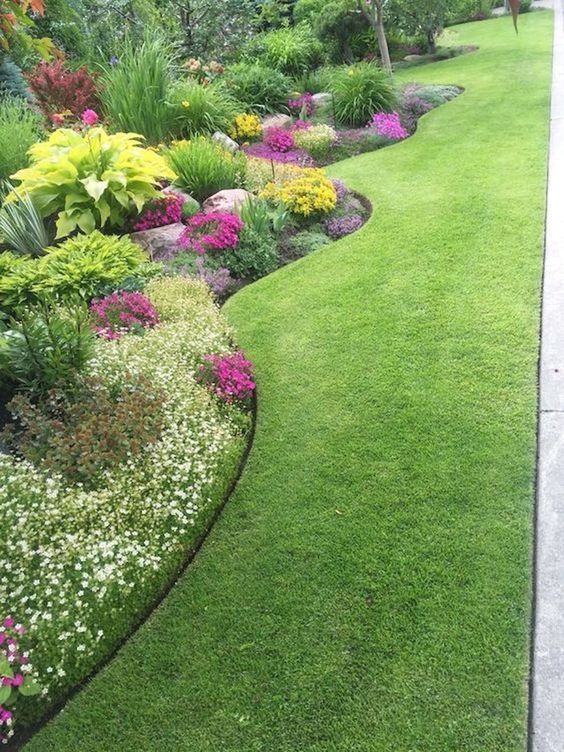Paths you may create in a vacation without hurting the pocketbook or your back are among our favorite DIY garden walkaways for your landscaping. Save money and effort by using one of these informal garden walkways instead of an expensive, time-consuming formal path. These pathway designs will mix in well and appear to have been in your yard for a long time.
Prepare all of the required equipment for this DIY project before you begin to save time and hassle. The equipment can be:
Drywall bucket saw
Rake for the garden
Garden trowel Spade
Rock Walkways and Informal Garden Paths

The garden’s informality and simplicity of upkeep are reflected in this twisting gravel walk. Mulch and gravel are the cheapest route materials for rock walks, and they’re also easy to put together, so they’re two of our favorite walkway choices. It’s as simple as removing the sod, rolling out landscaping fabric, and spreading mulch or gravel.
Mulch and gravel walks can range from informal to formal, depending on the design and edging material. They might be meandering, wood chip–covered trails or meticulously planned designs. Coarse bark, ornamental mulch, washed stones, crushed gravel, and shells are just a few of the loose materials available.
Walkways with Mulch
Wood chips, cocoa beans, and cypress bark are the three most frequent forms of mulch for garden walks, as previously indicated. These route materials are simpler to move and spread than a stone since they are lighter. Mulch is also less expensive than gravel or stones. Keep in mind that organic pathways deteriorate with time, so you’ll need to replace the material every two to five years. For roads that pass through regions with poor drainage or that are damp, don’t use bark, wood chips, or mulch. It’ll result in a muddy route.

Bags of mulch may be found at home centers, but your local nursery or landscaping provider will have the finest assortment of organic materials for a walkway. Depending on the size of your walkway, bulk material may be less expensive than buying bags. As an alternative to grass, lay down a 3-inch-deep layer of mulch that is 3 feet broad. Call your city hall’s public works department or look into local tree pruning businesses. They frequently provide free mounds of wood chips or mulch for transportation.

DIY Garden Walkways made of gravel
There are several varieties of low-cost gravel available for pathways. Crushed gravel, crushed limestone, and pea rock are all common forms. Consider washed gravel, crushed stone, or crushed shells for a more formal or long-lasting route than mulch. These materials are long-lasting and simply require occasional weeding to maintain their appearance. Crushed stone, rather than smooth pebbles, is better for running a wheelbarrow or lawn mower along the walkway. Crushed stone’s jagged edges join together to produce a strong surface. Crushed stone also has a lower chance of being kicked out into the yard.

Gravel for pathways is divided into two categories: kind and size. Smaller stones, less than 1/2 inch in diameter, are excellent for walkways because they are more comfortable underfoot and pack together well. To find out what’s available in your region, go to your local nursery or landscape supply store. Gravel is frequently sold in ton quantities. Measure the path’s length and breadth. Take these measurements to the supplier and ask for assistance in determining the amount of gravel you require. Unless your path is really short, having the content delivered is typically the best option. Gravel costs roughly the same as mulch for a 3 in. deep and 3 ft. broad route.
Here is how you can make DIY Garden walkways.
